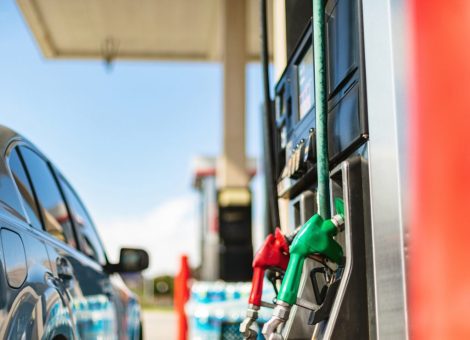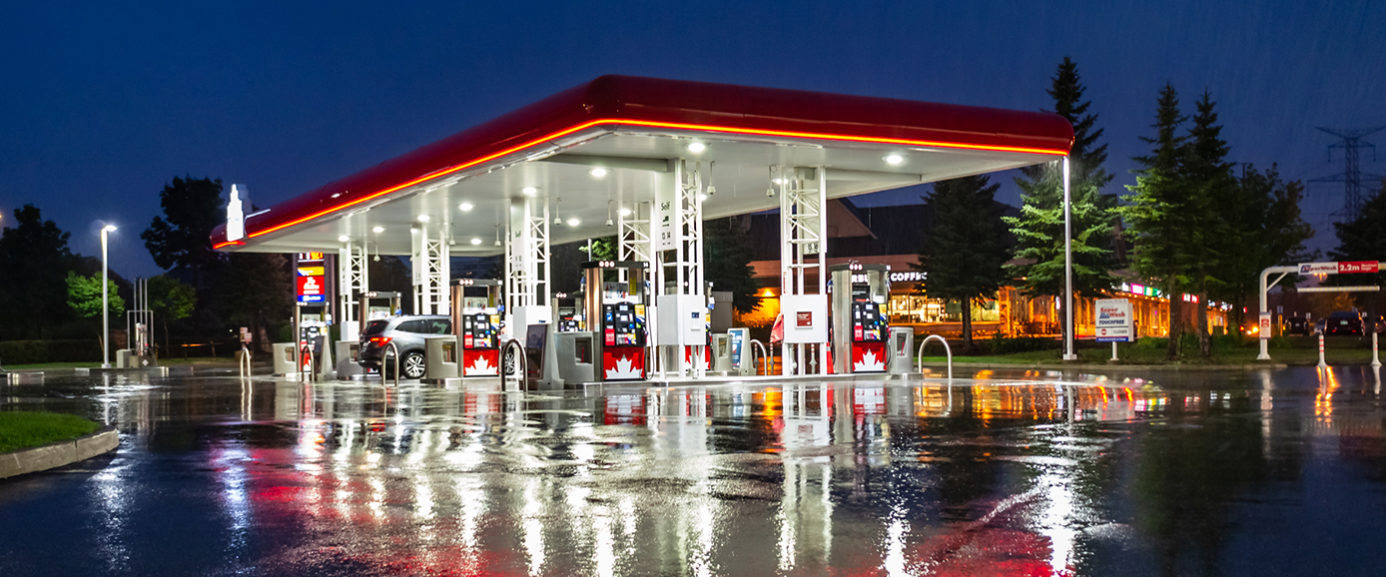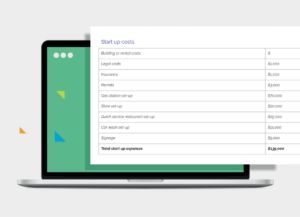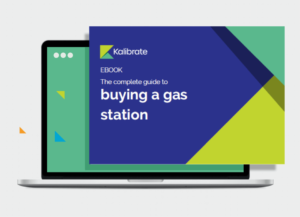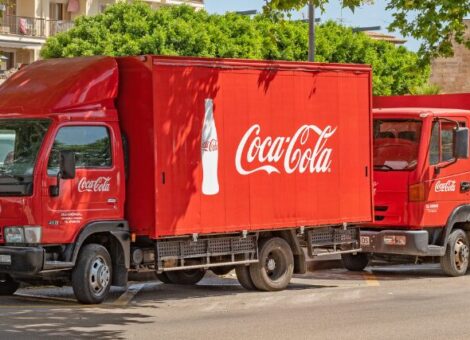Complete guide to buying a gas station
Becoming a gas station entrepreneur
Owning and operating a successful gas station and convenience store is the epitome of the American dream. With minimal experience, hard working gas station owners can build a business to serve their communities — and support their families.
National Association of Convenience Stores (NACS) reports that of the 150,000 + convenience stores and gas stations in the US, more than 62% are owned by single store operators — proving that a gas station is the perfect start up business for a budding entrepreneur.
Consider more than just gas
Margins on fuel are low and, unsurprisingly, demand for gas has fallen since the COVID-19 pandemic caused a shift in consumer behavior. The US Energy Information Administration (EIA) reports that throughout 2020, the pump price was consistently lower than the previous year. The national average price for gasoline dropped $0.488 USD in 2020, with diesel dropping by $0.662 USD per gallon.
This doesn’t need to be bad news for gas station owners. Changes in consumer behavior reduced demand for fuel — but increased demand for other items. A NACS survey of 1,828 member stores found that 52% saw an increase in grocery sales since the start of the pandemic. As consumers are increasingly avoiding crowded areas like grocery stores and big box outlets, the local convenience store has become the “go-to” source of essential items for their local communities. Quick service restaurants (QSRs) and drive-thrus have grown in popularity and click and collect services from small stores have become the norm. Today’s gas stations and convenience stores have become a vital service provider for their communities.
Getting started - writing a business plan
Every start up business needs a business plan. Writing a business plan may seem like unnecessary admin — but it will enable you to think through every aspect of your business in detail and will stand you in good stead for discussions with investors and loan agencies.
Getting started - finding a location
When building or buying a gas station, the location you select has a significant influence on future success.
As consumers, we buy gas when we need to refuel, so having the “right” location is arguably one of the most important factors of your gas station. A great location has high volumes of traffic as well as high visibility to the passing traffic. But a busy street isn’t everything, Phillips 66 suggest; “Consumers will even pay more to avoid turning into an area that makes entering or exiting difficult.”
You need to consider how the passing traffic will view your site ― how easy is it to access? How visible is the signage?
While traffic levels are important for gas sales, your success doesn’t have to solely rely on passing cars. Adapting your strategy to your surroundings will help you to harness the potential of your location.
Gas stations that are close to a highway intersection tend to attract higher levels of passing traffic, but they are less likely to build a loyal customer base. If your site is in a residential location, focus more on your convenience store or QSR offering and provide services that benefit the local community. You won’t achieve the same fuel volumes as a busy highway gas station, but you can adapt your strategy to fit your location and generate revenue from other opportunities.
When assessing a potential location, you need to consider not only the current surroundings — but future development too. Your local Development Services Department will have information on all planned development in the area. A new residential area, a retail park, and changes to road layouts could all have a big impact on the future success of your location. Select a location that works not just for today, but for the future too.
Consult the data
Site selection isn’t a guessing game. Data is available to help influence your location decisions. Average annual daily traffic (AADT) figures can help you understand traffic levels on the roads around your potential sites. Demographic data provides insight on who your local market is — and what you can do to meet their needs.
Many experienced gas station owners base their site selection decisions on gut feel. Your immediate emotional reaction might tell you whether a location has the potential for success and many profitable decisions have been made this way, but if you require investment for your gas station, you may need to base your site selection on something more robust. Combining multiple factors in your site selection process ― emotion, experience, and science ― will lead to successful site selection.
Useful resources:
TrafficMetrix® ― provides AADT counts and five year traffic projections for the whole of North America.
Trade Area Systems (TAS) ― provides a platform that combines verified data sets to help inform site selection decisions.
Why location isn't everything - other elements to consider
The location of your gas station will hugely affect its potential — but it’s not the only element that can influence your success.
Assess your market
Who are your competitors? A busy location is great, but not if there are competitor stations on every corner. If you’re in close proximity to multiple competitors you need to understand what they offer, how they price, and how they operate. A full understanding of your competitors will help you to select products and services that differentiate you from the others. It’s not all about price, you don’t have to be the cheapest, but you need to offer something that your local customers want, that your competitors don’t offer.
Who are your customers? A fuel station is, of course, serving the needs of vehicle drivers, but you’ll need to understand more about who you’ll serve in order to offer the products and services they really want.
Demographic data can help you to determine who lives in the local area and what you might be able to offer that would entice them to visit your store. Combined with the competitive market information you’ve gathered, you’ll be able to find a service or product that your local market want that isn’t already fulfilled by the competition.
For example, in a residential area with a high number of parents you might consider a child friendly coffee shop in your store, with baby changing areas in the restrooms, and a coloring-in station or play equipment. In contrast, a location on a busy highway near an airport should consider stocking cell phone chargers, toiletries, and other items that frequent travelers might require.
Remember that your site exists in a broader landscape which is always developing. Analyzing your market isn’t something to do once before you open your doors, it’s an ongoing process that needs to be continually reviewed.
The impact of brand
A brand is more than just a company name and a set of colors — it’s an identity. A well-known brand carries with it a set of instantly recognizable elements. By just looking at a sign above a shop, a passerby understands what products the shop sells, the price point they sell them at, and the level of service they expect to receive.
Gas station owners can choose to fly the flag of a major brand and immediately harness the public perception that comes with it. What’s more, flying a brand allows you to take advantage of their big budget marketing and promotion. Certain brands resonate with different demographic segments. Understanding your market and competitors is key to selecting the right brand.
Useful resources:
Forecourt facilities
The service you offer can be adapted easily, but your facilities are more fixed. Adding and changing facilities can be costly, so it’s important to get it right from the outset. To successfully plan your facilities, you need to fully understand the ideal customer journey.
For example, if your site has a convenience store, where will your customers park? Having spaces too far away from the store will discourage customers who want to stop by quickly to pick up essential items. Not enough parking spaces means customers can’t stop when they need to. Complicated store layouts may stop them finding what they need and put them off returning.
If you have a QSR, will you offer drive thru? The drive thru lane will need to be easy to enter and exit, visible from the forecourt and the street, and not restrict access to the rest of the facilities. A badly planned drive thru lane can block access to parking spaces and exits and will put customers off pulling into your forecourt.
Safety is an important factor that massively affects customer perception, but is sometimes overlooked when planning facilities. Good lighting can make the difference between a dark forecourt that looks dingy and unappealing, and a light, bright forecourt that looks inviting, no matter the hour. Good lighting will not only attract passing traffic, but will make sure that your customers feel safe at your site.
The science of merchandising
Merchandising isn’t just about flashy promotions — although that can play a part — it’s about offering the right products and services, at the right time, at the right price, and with the right attitude. This is the art and science of merchandising.
Good merchandising can make a customer feel like they need something before they even knew they wanted it.
Think about the mix of products and services you’ll sell. Make sure you offer a combination of low and high margin items and then display and promote them in a way that entices customers to purchase both. Gas stations with convenience stores have been known to sell gas as a loss leader. They sell gas at cost or below cost price to entice people into their stores for the higher margin items like candy, snacks, and tobacco. This strategy can work with different products if you get the mix right.
The price is right — but what if it’s wrong?
Price is, of course, a very influential factor in deciding where to buy fuel, but many gas station owners focus so much on price they forget the other elements of success. Remember that Phillips 66 quote from Chapter 1: “Consumers will even pay more to avoid turning into an area that makes entering or exiting difficult.” Price is important, but some customers will pay more for a better overall experience.
The competition matters. When deciding on your pricing strategy you need to understand how your competitors price, and how your price strategy compares. You’ll need to offer competitive fuel prices so that your customers feel that they’re getting value, but you don’t necessarily need to be the cheapest. Setting a price too high will discourage people from turning in, and they’ll never get to see the other products and services you have to offer. But set your price too low and you risk losing margin and not generating enough revenue at your site.
Operations
Think about the way you’ll operate, how that might impact your customer experience, and how it compares to your competition.
Technology can be utilized to make the customer experience smoother. Pay-at-the-pump facilities, self-checkouts, and digital payment methods can be implemented to make your gas station more convenient than your competitors.
Once you’ve got everything else in place, the final hurdle for your gas station is planning the way you’ll operate.
Many gas station owners are hardworking, hands on, and like to manage their own sites. As you work out the best way to do things, you should document your processes. This will help you to create consistency, and eventually allow for someone else to take over certain areas, when you’re ready to step back or take a break ― after all, we all need a rest sometimes!
People buy from people
They say that “people buy from people, not businesses”, but the importance of good staff is often overlooked by gas station owners. People may come to your store for the unique products you provide, but they’ll only come back if the service is good. Customer service has always been an important part of a consumer’s experience. But in today’s post Covid society, it’s more important than ever.
The human element of your offering can set you apart from your competition, elevate your reputation, and keep customers returning to your store. Richard Branson once famously said; “take care of your employees and they’ll take care of your business”, so invest in quality staff, empower them with training, and reward their hard work — and they will keep the customers coming back.
Cleanliness is next to Godliness
“Cleanliness is next to Godliness”, as the old saying goes, and while we can’t verify the truth in that, we can confirm that the cleanliness of your forecourt and store have a big impact on your customers’ experience — and their likelihood to revisit.
Don’t overlook the importance of small details. Overflowing bins, dirty toilets, and poor lighting will turn your customers away. Regular cleaning processes will help to ensure that your gas station is the one passersby want to stop at.
Change is inevitable
The gas stations of today are a far cry from the gas stations of 30 years ago, and they will continue to change. The most successful gas stations are those that assess the market and adapt their offerings.
Each of these elements should be regularly assessed to make sure they still meet the needs of the customers and provide revenue for your business.
After over 40 years’ experience in the fuel retail sector, Kalibrate identified the 7 Elements for Fuel and Convenience Retail Success.
Registering your business
You’ll need to consider whether you want to set your business up as a limited liability company (LLC) or a corporation.
- An LLC protects you from being personally liable from creditors or any lawsuits filed against you. The pass-through taxation process allows profits to be taxed at your personal tax rate. An LLC does not require officers or directors in order to operate. You will be required to pay annual fees and taxes, which vary from state to state. It’s harder, though not impossible, for an LLC to secure external funding.
- A corporation is owned by its shareholders. It offers stronger protections to its owners from personal liability, but it also requires more extensive administration processes and is subject to higher taxes.
An LLC is generally favored by gas station owners. Its relative simplicity makes it the best choice for small business owners.
Useful resources:
You can find out more about each business type from the U.S Small Business Administration.
Once you’ve chosen your business type, you need to register with your state. Many states have online forms to help accelerate the process, but some may require you to submit written documents.
The state will require you to have a registered agent. You can act as your own agent or appoint someone else, but they must reside in the same state. Your agent will receive all legal communication and mail for your business.
For an LLC, you’ll need to provide your “articles of organization” which include:
- Business name
- Location
- Ownership and management structure
- Registered agent information
You’ll also need an LLC operating agreement which describes how key decisions will be made within your business. It’s an agreed structure for your company’s financial and operational decisions.
Registering for taxes
Registering for an Employer Identification Number (EIN) can be done online with the IRS and you’ll receive your EIN immediately after completion.
Useful resources:
Permits, licenses, and insurance
Different states have different legislation covering permits, licenses, and environmental considerations for gas stations, so you should always check the requirements in your location. Check with your Secretary of State, or Department of Environmental Protection to make sure you understand the requirements.
Permits and licenses
There are different permits you could be required to obtain, or notifications you may need to submit such as:
- Notification for Underground Storage Tanks
- LP Gas Dealer License
- Air permit
- Site inspections
- Fire safety certificates
Every state requires gas station businesses to obtain a Motor Fuel Retail Outlet License to allow you to sell gasoline. These are annual licenses and will require renewal each year. The application process is different in each state, but most can be accessed easily online.
Each permit or license will require a fee to be paid. Many are small, less than $500, but still need to be included in your financial calculations.
Recently, some states have required that EV chargers be added before granting permits for new gas stations. You should check the rules in your local area and make allowances for EV chargers to be added. The rise in EV adoption is discussed in this eBook under “‘The future of gas stations”.
Insurance
General liability insurance is not normally a legal requirement, but should be in place to protect yourself and your business. General liability insurance will cover you if a patron were to injure themselves, or others, on your property.
Commercial property insurance is required to cover your building, equipment, and business assets, and worker’s compensation insurance is required to cover work related injuries for your employees.
If you plan to sell liquor, you may also need liquor liability insurance.
Getting finance
Getting finance for a gas station isn’t always straight forward. Traditional lenders see gas stations as risky investments due to environmental concerns, the difficulty in converting them for other uses (making them harder to sell), and their reliance on cash payments, which can cause accounting issues. That being said, there are a number of viable options available for financing a new gas station in the US.
There are private investors that can offer competitive loans and investment, and some franchise options may offer to lend you capital to get started.
Many gas station entrepreneurs get finance from the Small Business Administration (SBA). The SBA can connect you with lenders that provide SBA backed funding. They will typically ask for a 15% down payment for a single purpose property like a gas station, which is far more affordable than commercial bank down payments.
Whichever finance option you choose, you’ll need to provide similar information:
- Business plan
- Financial projections
- Credit history
- Start-up costs and use of funds
The future of gas stations
A cultural shift is starting that is seeing electric vehicle (EV) adoption rise. Some states are changing faster than others, but EV isn’t something that can be dismissed.
Circle K’s 2021 Super Bowl ad suggested that America was ready to catch Norway in the EV adoption race. The funny commercial got a lot of attention, but made one vital point ― the US is behind many other countries in EV adoption rates ― and this presents a golden opportunity for gas station owners this side of the Atlantic.
In 2020 EVs made up 75% of new car sales in Denmark, compared to just 1.9% in the US. US entrepreneurs can look to Norway to see what works there, how it works, and how it’s changed over time, then implement that here.
Kalibrate’s EV report: The Electric Opportunity − Mapping the habits, preferences and needs of electric vehicle drivers, will give you insight into EV drivers and businesses in the US, and how they differ around the world.
In May 2021, Circle K revealed their new fremtidens stasjon (“station of the future”) in Norway.
It looks like any other Circle K site, but has some key differences. The EV chargers are placed at the front of the forecourt under the main canopy, while the fuel pumps sit at the back of the site. The canopies are covered with powerful solar panels which replenish the power supply over time ― and attract the more eco-conscious consumer. A large glass shopping and eating area provides a space for customers to sit (and spend) while their cars are charging.
This may be a little over the top for today’s American consumer, but when building or buying a gas station, you should consider how your site may change in the future. Many gas station owners we speak to have reserved places on their forecourts for EV chargers with the plan to install them at a later date.
Useful resources:
If you’re interested in installing EV chargers, there are some incentives you may be able to take advantage of:
Enel X — have compiled a list of state specific EV tax credits, incentives, and rebates.
Chargepoint — explain federal tax credits, and hold a webinar on how to claim for them
Decisions made easy with data
Owning and operating a gas station can really pay off if you’re dedicated to putting in the hard work required. With many application forms to fill out and requirements to meet, the start up process can be complex ― but your decision making doesn’t need to be.
Data can help you to understand your competitive environment, assess trends, and validate your decisions, to ultimately drive success. Kalibrate’s Single Site Analysis can provide all the data you need, on any potential gas station location, including:
- Multiple detailed volume projections
- Local area demographics
- Market share analysis
- Competitor outlet analysis
- Local area site fuel volumes
- Convenience store, quick service restaurant, and car wash sales opportunities
- Bench marking against all 7 Elements for Fuel and Convenience Retail Success
Read more articles about:
Location intelligenceRelated Resources
Single Site Analysis
The Kalibrate news round-up: December 2024
In this monthly feature, we look across the industry and mainstream news to uncover some stories of note that we...

Location intelligence
Boost gas station performance: Questions answered for fuel retail success
Fuel and convenience retail is evolving fast, and staying competitive means asking the right questions and making...
